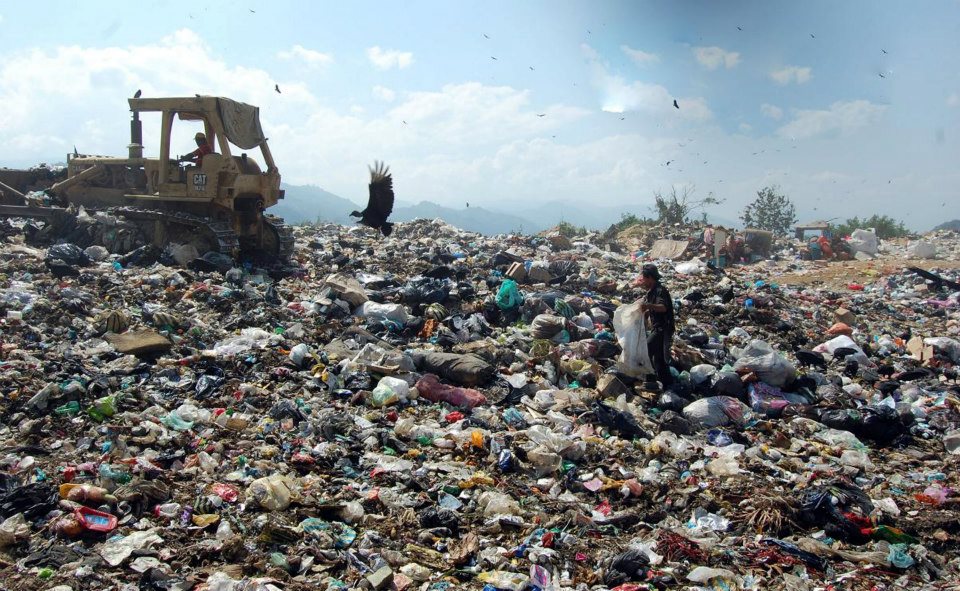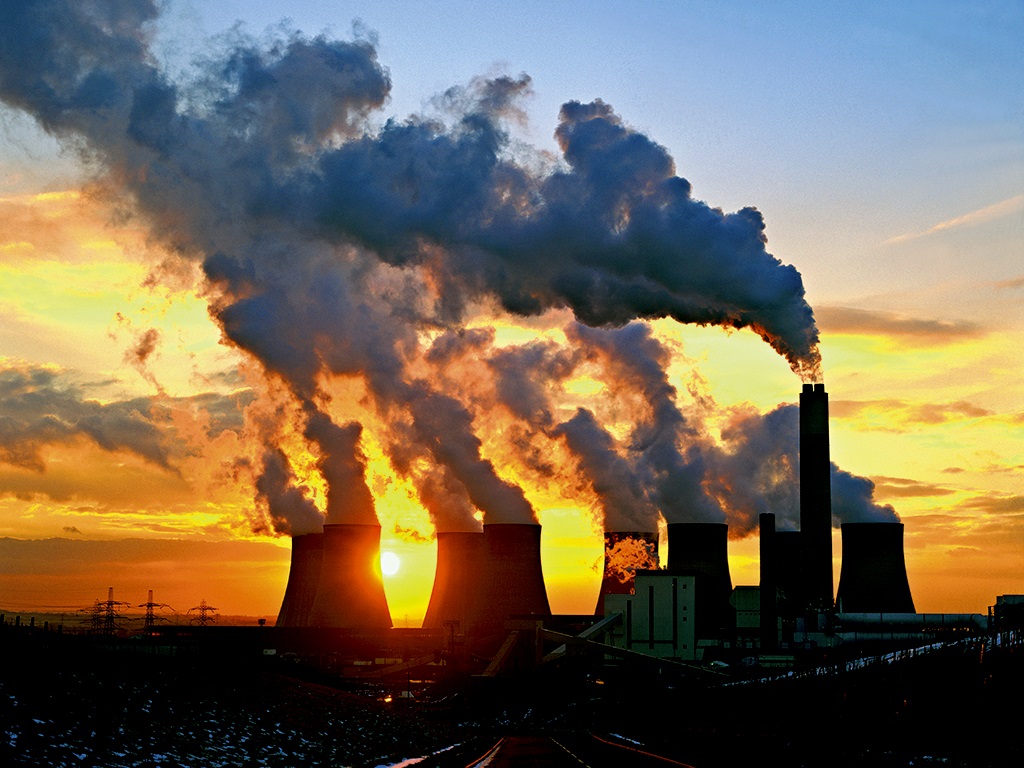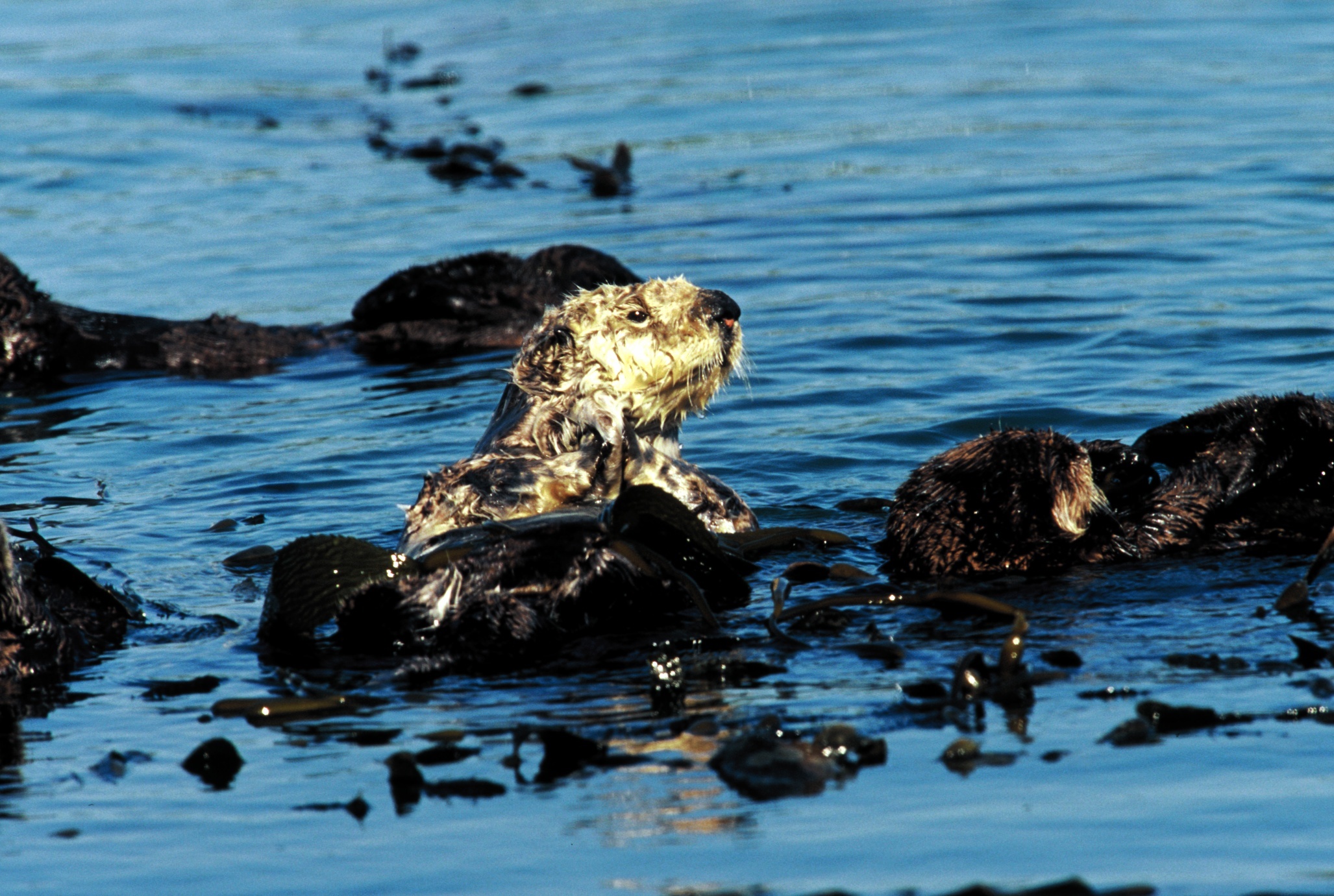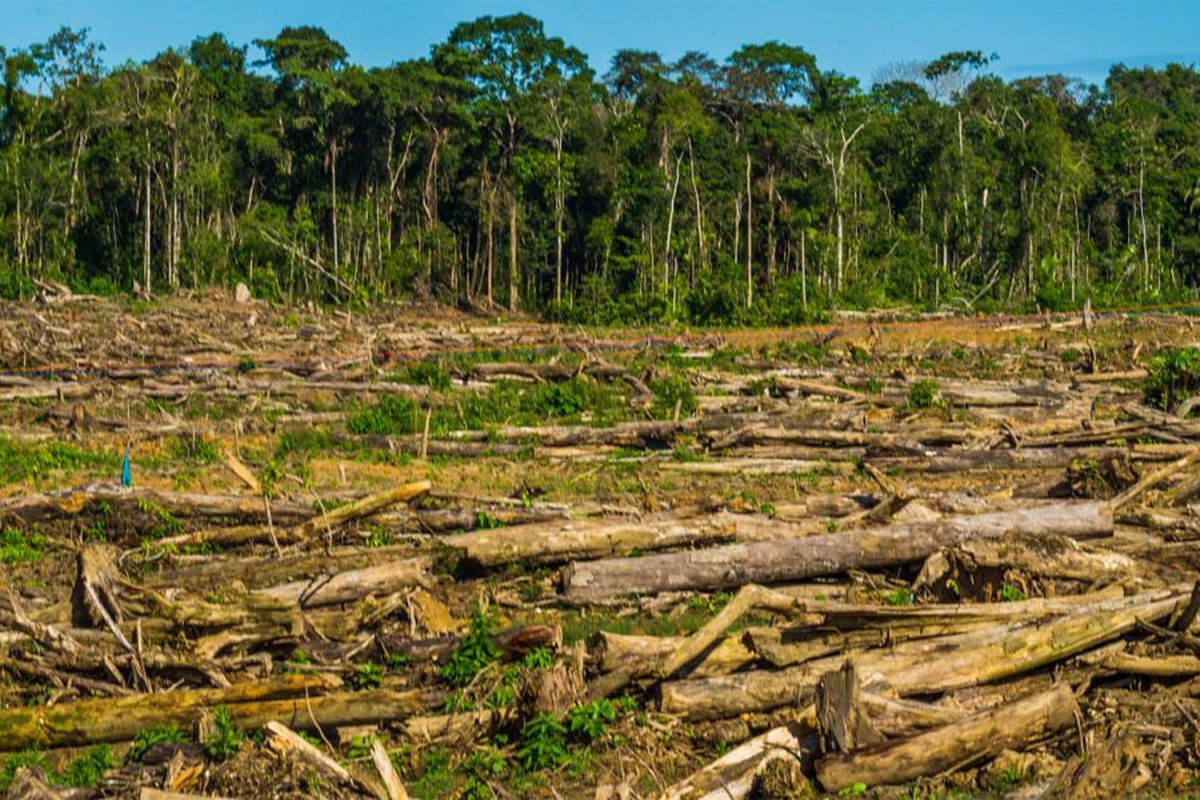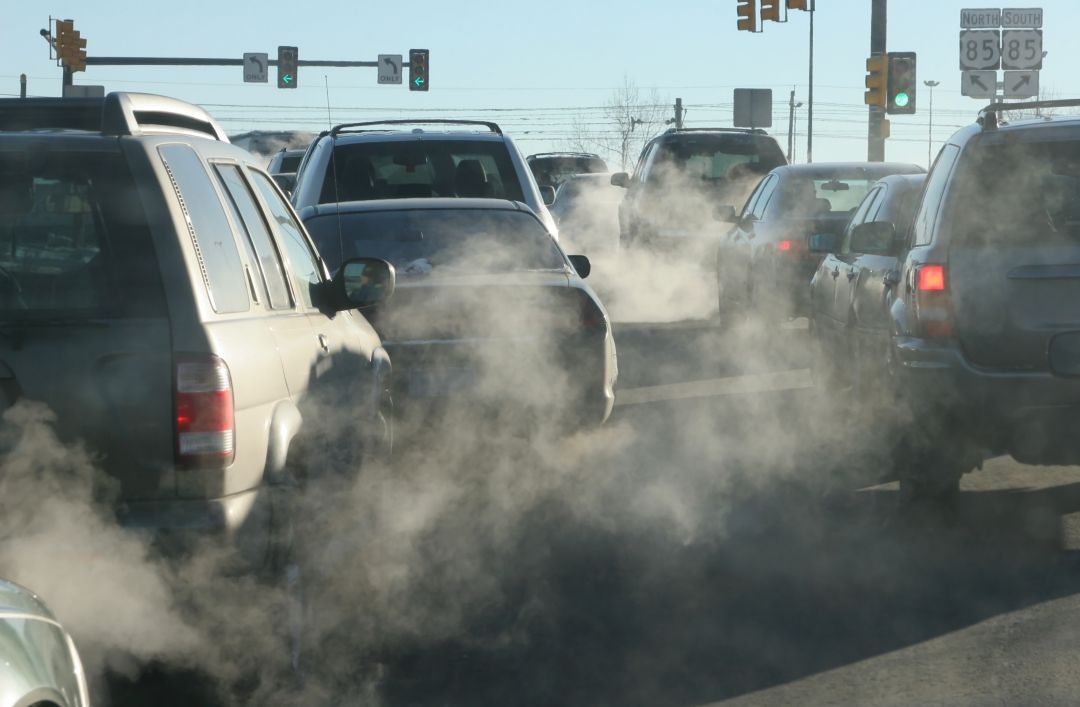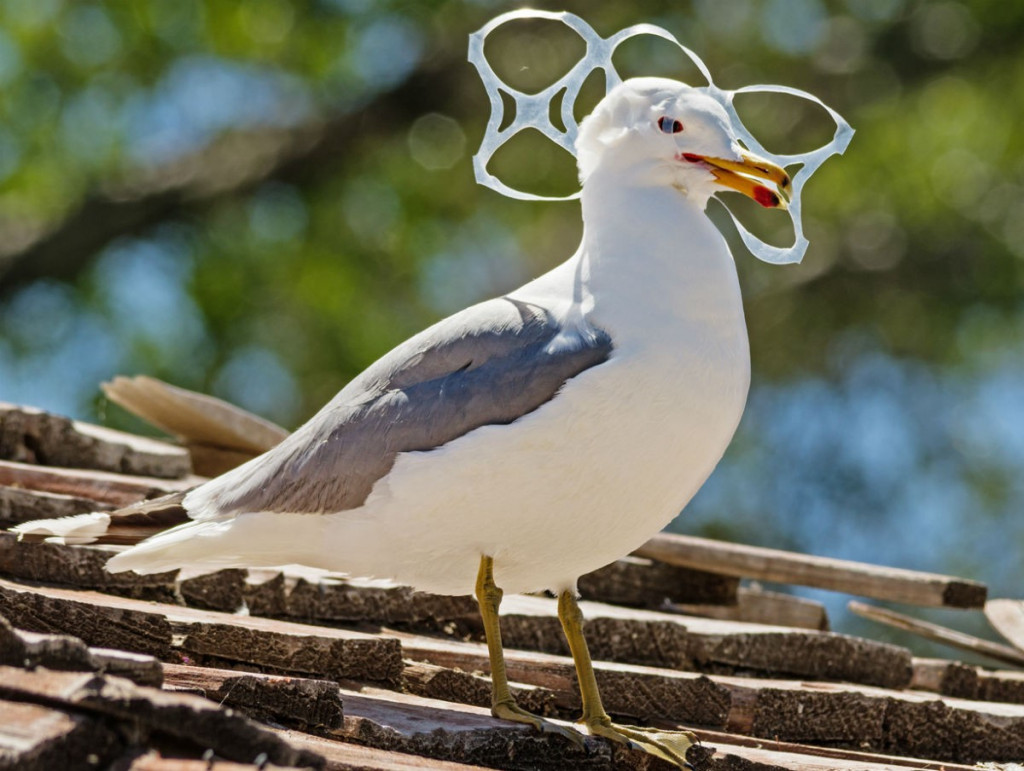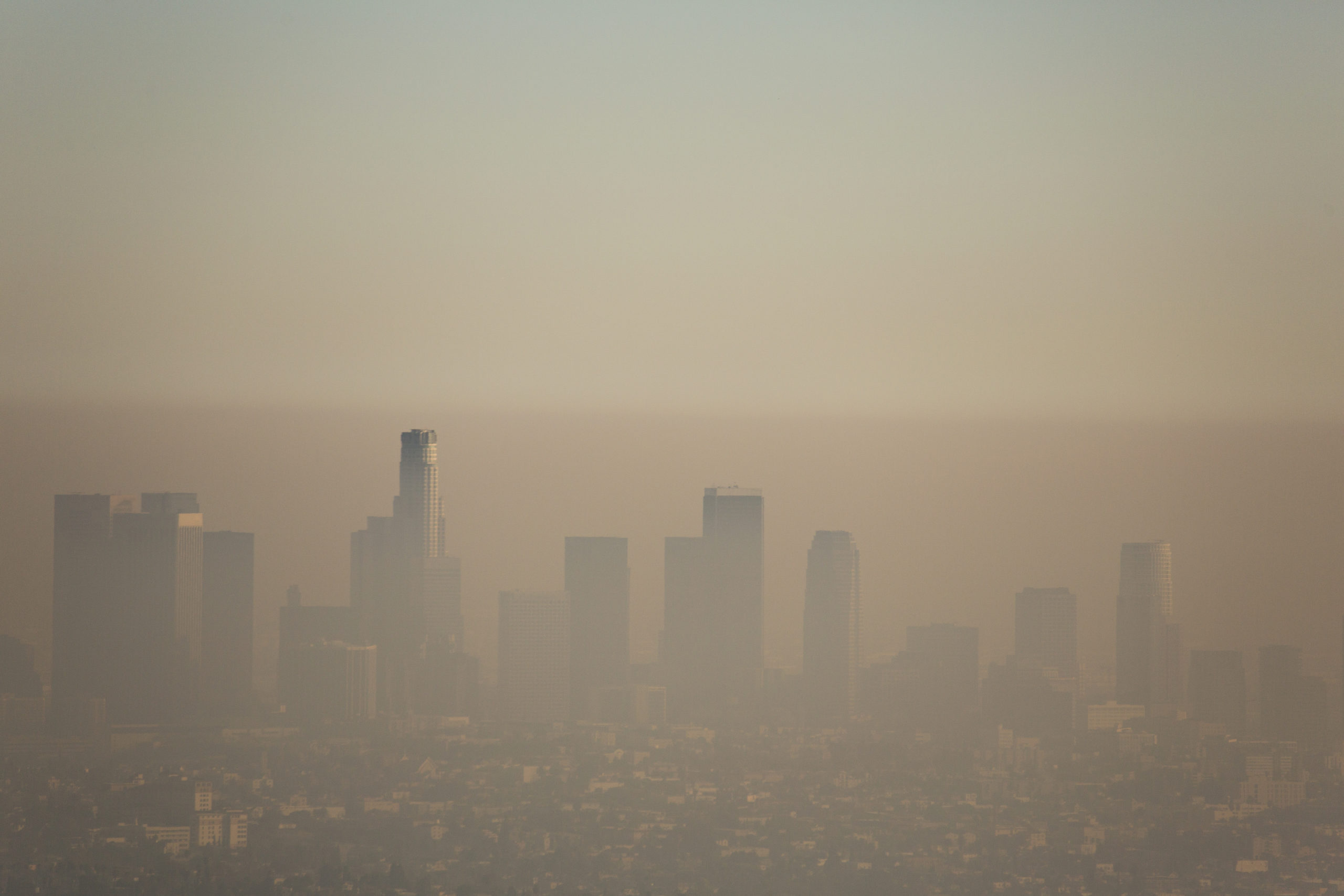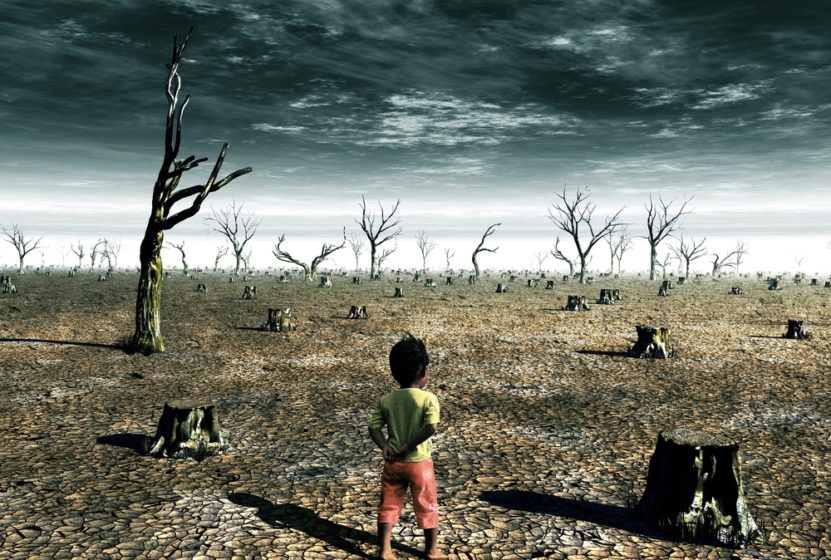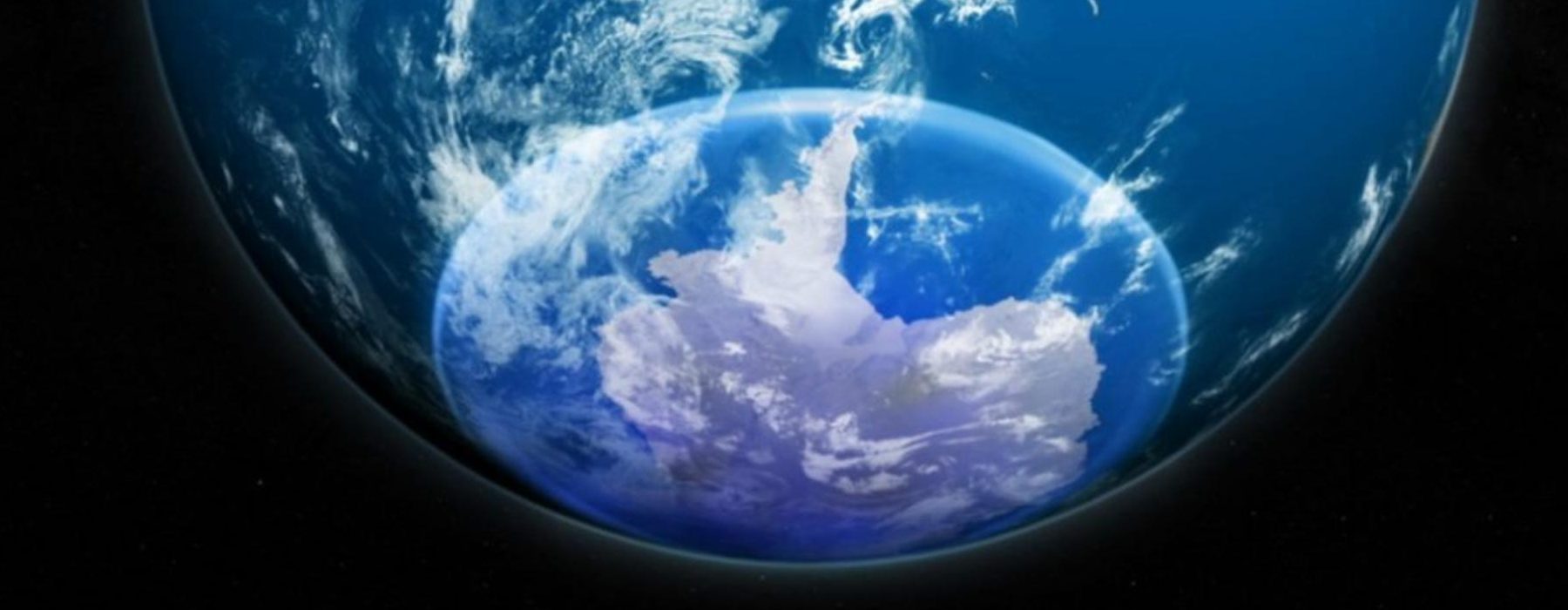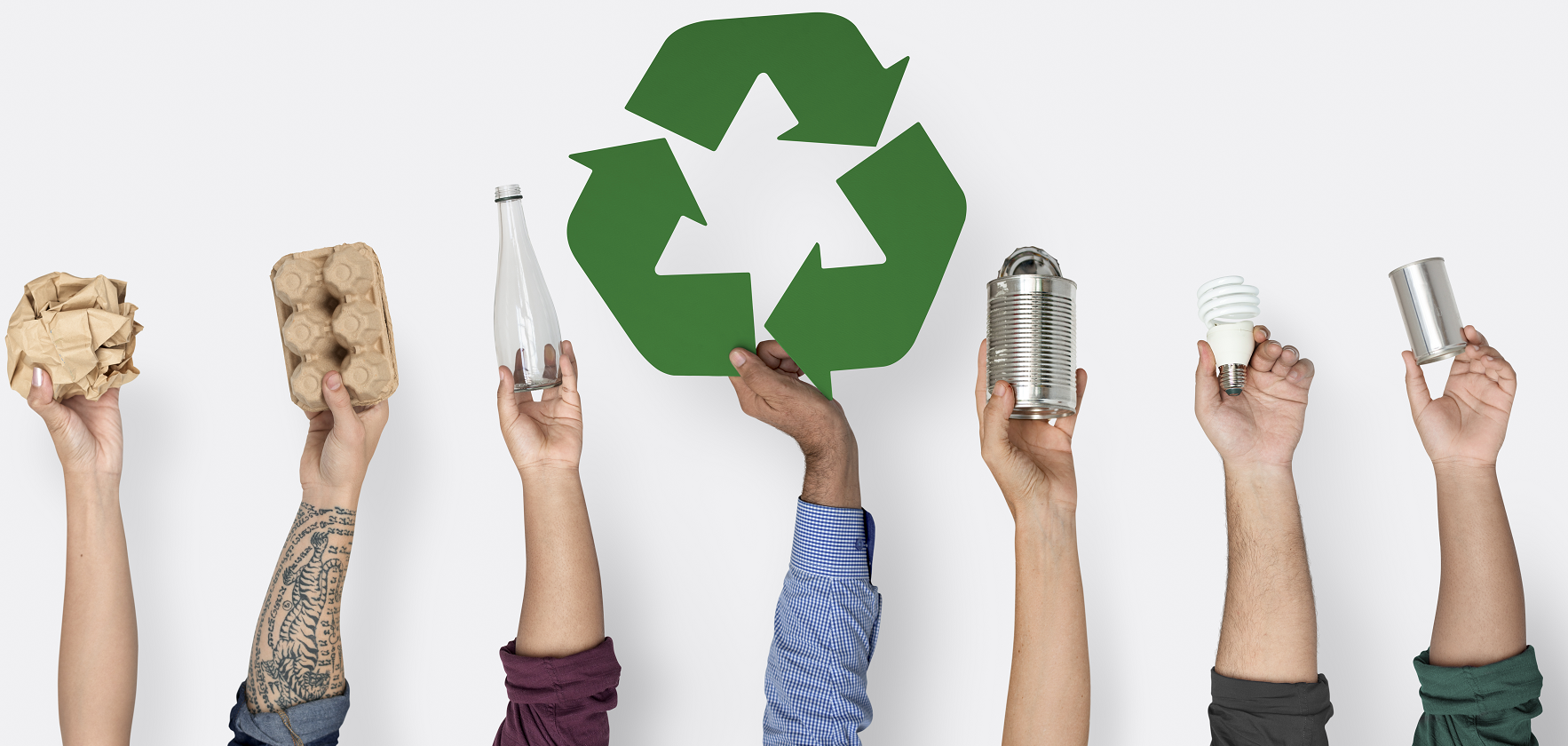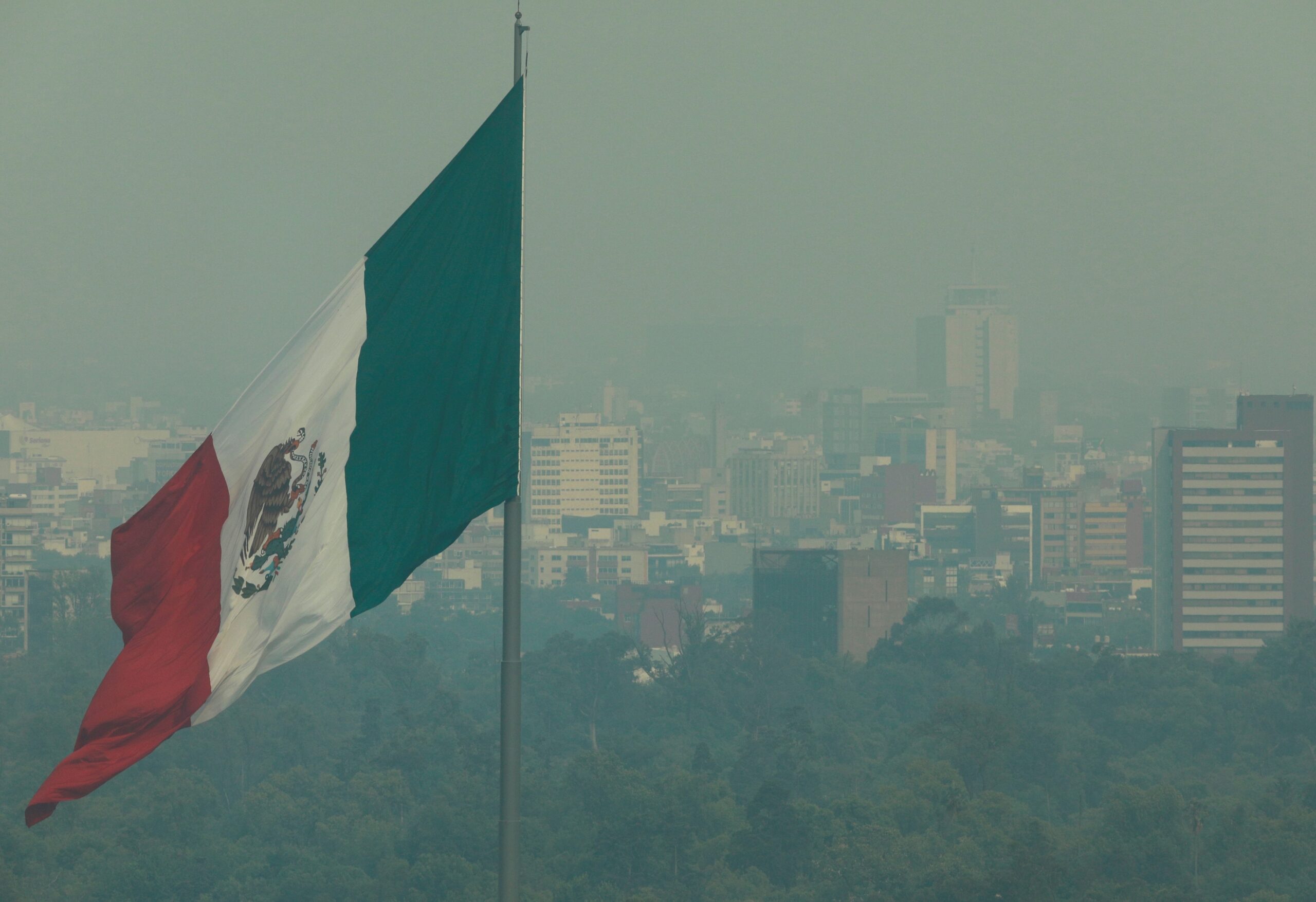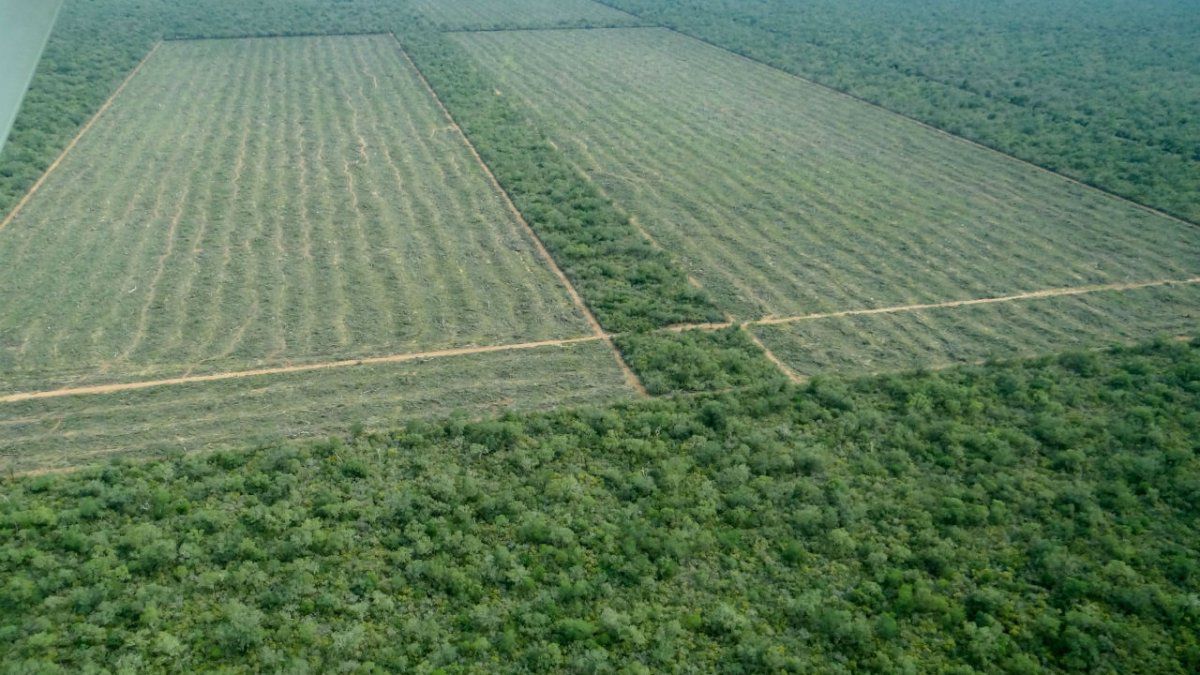The Consequences of Environmental Deterioration are attributed to the activities of man due to his desire to consume. In this race, the human being has been destroying everything in its path. He has destroyed and polluted the waters, the soil, the air and not to mention the devastation of biodiversity. In this article you will find everything you need to know about the causes and consequences of human activity. Cheer up, read and reflect on our actions in the only house we have, planet earth.

Environmental Deterioration
Environmental deterioration is given with the introduction of physical, chemical and biological agents to natural environments to cause their degradation. These harmful components harm all living beings found on the planet. There are various forms of pollution, among which are soil, atmospheric, water and acoustic pollution, which are the most common, but we can also mention light, visual, thermal, electromagnetic, radioactive or genetic pollution.
Likewise, pollution levels can be classified as punctual, when the agent affects a certain point, for example a drain, and diffuse, when it is dispersed through acid rain or by the action of the wind, as well as by the torrent of water. Water. There are other forms of pollution, which are acoustics, which are more damaging to those species with higher hearing capacities, creating disorientation and stress.
On the other hand, there is light pollution, which changes the biorhythms of some species thanks to the excess of artificial light. The thermal one, in this case the aquatic species are the most affected, since when the temperature rises the solubility of the gases in the water decreases, hence the low availability of oxygen.
The Consequences of Environmental Deterioration are making life on the planet increasingly complicated. The destruction of soil, air and water directly affects biodiversity and our great home called planet earth. It is important to know that if we continue doing these practices we will enter a stage of total destruction. It has been many years of accumulated annihilation without looking at or measuring the collateral damage we are causing. The desire to create leads us to destroy, promoting activities that directly attack every element on the planet.
Causes of Environmental Deterioration
The damage to ecosystems, the depletion of resources and the extinction of some species are another consequence of environmental deterioration. This is due to excessive consumerism and disproportionate disrespect towards natural elements that man has had in recent decades. For this reason, we must stop to think and act according to the impact that is being caused and the great consequences that this has on the planet, which is worth noting is our only home. Therefore, here are some reasons that cause this deterioration and possible solutions.
Economic models and consumption patterns
Among the causes of environmental deterioration is climate change, the destruction of biodiversity, alteration of natural ecosystems and saturation in the consumption of fossil energy, thanks to the implementation of unsustainable economic models such as those of China and the United States, who have the greater share of responsibility for the high levels of pollution suffered by the planet. These models stimulate excessive consumerism, without considering the collateral damage they can bring, thanks to the excessive use of resources to satisfy created desires or needs.
The new patterns of consumption that have been acquired since the famous Industrial Revolution, where the population began to experience great changes, not only due to the technological advances of the time, but also due to the awakening of the consumerist syndrome, have been increasing every day more , until the present. All this has resulted in an excessive consumption of goods, services and food, helping to accelerate environmental degradation.
Obsolescence and garbage production
The excessive production of garbage, is another of the causes of environmental deterioration that is due to that desire of the human being for the uncontrolled consumption of goods, services and food, without thinking about the negative effects that they generate to the environment. This leads to the production of large tons of daily garbage around the planet, which translates into an accelerated contamination of the three essential elements, the soil, the air and the water (rivers and seas), increasingly degrading health and welfare of all living beings.
In the case of planned obsolescence, which is nothing more than the super production of electronic scrap, it has become another of the great causes of pollution, because due to economic growth based on hyperconsumption, the reduction in the useful life of equipment, together with the need for immediacy, thanks to the exaggerated and effective advertising activity, make the consumer feel the need to acquire the latest generation equipment, thus creating large amounts of waste.
This pattern of consumption has become very common in Europe, North America and Asia, causing their electronic waste to end up in large landfills, causing high pollution. The handling of these wastes is mostly done by people without any type of protection, resulting in organic conditions. Air pollution is due to the acceleration of the greenhouse effect generated by the highly toxic smoke that emanates from the burning of equipment and the infection of large extensions of land taken to dump said waste.
The world is suffering all these consequences daily, before the indolent gaze of large manufacturers who only seek their economic benefit, regardless of the fact that they also breathe, walk and consume the water of this planet. In view of the foregoing, it is suggested to require a longer warranty period for electronic devices, the creation of parts that allow equipment to be updated, the use of a recycling line so that they are handled correctly, with the least possible environmental impact and, therefore, finally the replacement of toxic parts as part of its components.
Industrial development
Industrial development has caused great environmental deterioration, despite bringing with it notable improvements in the quality of life of human beings in its most generalized sense. These industrialization processes without rigorous environmental control, for the most part, carry out actions such as uncontrolled deforestation, excess use of energy from fossil fuels and the contamination of water with toxic waste.
The industry is increasingly concerned with production rather than action. All for the desire to meet the demand for products, goods, services and food for populations that are becoming larger, without taking prevention, control and safety measures that allow minimizing the negative effects that this produces.
Nuclear plants
Nuclear activity was presented as a kind of alternative energy, which has shown over time the consequences of the environmental deterioration it can cause. This type of energy certainly does not generate a greenhouse effect, it is planable and of low monetary cost, but with a high environmental cost. Nuclear plants have been the cause of major disasters such as Chernobyl in the Ukraine in 1986 and the explosion of two atomic bombs over Japan in August 1945, which caused irreparable environmental and human loss due to the large radioactive exposure.
In the case of Fukushima in Japan in 2011, a large amount of radioactive material was released, but without serious injuries and it is estimated that without long-term consequences. It should be noted that not only is there radioactivity produced by artificial radioisotopes, but there is also that generated by nature, known as background radiation, among which are uranium, thorium, radon, potassium and carbon.
All this endangers living beings since nuclear waste, bombs and stations are an eminent danger not only for the place where they are, but for humanity in general. This activity negatively affects the flora, fauna and human beings that are within reach of the radioactivity that can travel freely through the air, becoming a true and constant threat to the planet.
Oil and Mining
The exploitation and transportation of hydrocarbons are another cause of environmental deterioration. These activities have always carried implicit risks such as spills, leaks in the pipes, explosions, and mishandling of equipment, which could cause irreparable contamination of the substrate, of the water, which would be one of the most serious and recurring, and lastly, the air.
All these factors come to directly and relentlessly affect plant, animal and human species, destroying entire ecosystems, deteriorating their environment and deteriorating the quality of life of all living beings.
Regarding mining activity, it is another cause of great consequences in terms of environmental deterioration, since its damage to the layers of the earth, especially when they are open pit, put both plant and animal species at imminent risk, thanks to to the elimination of large extensions of soil and the use of chemical compounds such as mercury, arsenic and cyanide, which facilitate their work, but are highly toxic to the environment. This regardless of the consequences it may generate in the short, medium or long term.
In addition to the previous causes, there is also induced weathering, which is nothing more than the alteration and disintegration of rocks through tools or chemical products to accelerate the release of heavy metals and their washing can be highly polluting.
Agricultural and Livestock Model
At present, agricultural activity has had a disproportionate boom, thanks to the notable increase in the population, which translates as one of the consequences of the environmental deterioration that the planet suffers today. All this is due to the new forms of production that are used and that attack the land, thanks to the use of chemical agents that help to exterminate pests and diseases, as well as the use of accelerators of the processes of growth and production of fruits of the plants.
All this deteriorates the substrate of large extensions of land, in addition to deforestation for new crops, causing a great negative impact on the environment. The ambition to meet high production standards has led to the introduction of genetically modified organisms in agricultural and livestock activities, giving way to the well-known transgenic products. These new species repowered with chemical products in laboratories, bring great repercussions not only to the mutated species but also to the organism of the final consumer.
As for the agroindustry, it has sought to have genetic uniformity to guarantee the efficiency of the process, focusing on the products with the greatest demand, thus becoming monoproducers. This practice has generated the disappearance of agricultural diversity. On the other hand, livestock production, every day increases in its demand, making it necessary to use excessively certain chemical products such as drugs and concentrated supplements, to stimulate the reproduction, growth and fattening of animals. Causing serious consequences in environmental deterioration.
The model based on consumption generates greater demand for certain items such as pork, poultry (chicken) and beef, which are elements of great contamination of the soil, air and water, visibly damaging ecosystems, increasing global warming, degrading land and biodiversity loss.
Forest Industry, Resource Extraction and Forest Management
The timber industry is one of the largest production companies in the world, which has serious consequences due to environmental deterioration, since these companies carry out large deforestation, ending plantation extensions and in turn damaging the substrate and biodiversity. All this is done in order to obtain raw material regardless of the environmental cost it generates, as is the case of the Amazon, the jungles of Central Africa, the forests of South America and part of Asia, which are the most affected in the world.
It should be noted that deforestation should not only be attributed to its need for raw materials, it also occurs in the cases of mining and construction, which has been destroying forested areas at an accelerated and unprecedented rate. Added to this practice are fires that may or may not be intentional. It is said intentional when the human causes such a catastrophe, with mostly economic purposes and the unintentional ones caused from waste such as glass or poorly extinguished fires, generating air pollution, exterminating some species and damaging the vegetation layer.
Fishing in Environmental Deterioration
Industrial and excessive fishing carried out with trawl nets, the warming of the oceans and toxic waste are part of the consequences of the environmental deterioration suffered by our seas, because thanks to this, marine biodiversity has been destroyed. In this sense, the fishing activity in itself does not generate major consequences, when it is done in a controlled and responsible manner.
However, when this activity is carried out to satisfy industrial needs, entire marine ecosystems are usually destroyed, putting the lives of some species at risk, which in many cases end up becoming extinct, which directly affects the food chain necessary for the proper functioning and marine population control.
Transport
There are various forms of transportation, land, sea and air. Each of them are responsible for the consequences of environmental deterioration. Such is the case of the automobile fleet, which grows more every day and the emission of these gases that are highly polluting, such as CO2, flood entire cities, causing the greenhouse effect that later becomes the well-known acid rain, due to the nitrogen oxide and sulfur oxide accumulated in the troposphere.
Water transport generates serious problems due to the remains of fuels that are continuously thrown by boats (of different sizes) into the sea, organic waste, plastics, radioactive products and oil spills, all of which have a negative impact on marine life. .
As for air transport, it is responsible for the largest emission of CO2 and nitrogen oxides (NOx), when they leave their large condensation trails, which directly contribute to global warming and acid rain.
Population growth
The human being reproduces more and more, being the first in the food chain brings problems of overpopulation, since there is no one to control the birth rate as can happen in animals. This is one of the consequences of environmental deterioration, since this excessive growth makes it necessary to produce more food, goods and services. As for their way of living, more and more space is required for housing and therefore many more sewage drains.
This super population is also the cause of the generation of much more smog that turns into haze, causing pollution to rise to levels never thought possible, which leads to a gradual destruction of natural elements.
Construction
Population growth and the consumerist syndrome mean that cities are increasingly squeezed by large constructions, considering this one of the many consequences of environmental deterioration. In order to satisfy these demands, man has found it necessary to steal spaces from nature, destroying ecosystems, deforesting and filling everything in his path with concrete. The materials used are specialists in trapping solar radiation, thus magnifying the greenhouse effect, which could be avoided by having more natural spaces that allow the balanced release of heat.
Biodiversity loss
The natural environment is facing serious difficulties with the loss of biodiversity thanks to the destruction of ecosystems, not only on land but also in the water, and all this happens because of the over-exploitation of natural environments to satisfy human needs. This has resulted in the loss of the habitat of different species becoming invasive species. The introduction of new laboratory species to natural environments creating an ecological imbalance.
Consequences of Environmental Deterioration
The consequences of environmental deterioration are very varied and alarming when one begins to look conscientiously at what is being done to the planet. All environmental problems are framed by population growth, which in turn increases the demand for goods, services, food and now also technological development. These deteriorations are at a planetary level, making consensus between countries necessary to reduce pollution levels.
Loss of drinking water sources
Water is essential for life, so its loss is one of the consequences of the most serious environmental deterioration that can be generated on the planet. This loss of consumable water, which is increasing in quantity, is due to the degree of contamination that rivers experience today. In addition to this, the loss of the topsoil, the destruction of forests, the large amount of both urban and industrial wastewater, are leaving the planet without the vital liquid which is essential and irreplaceable for all living beings.
Impact on wildlife
The fauna does not escape the consequences of environmental deterioration, it has been relentlessly affected by the excesses of man in his desire to destroy. Many species have become extinct due to the destruction of their habitat, annihilation for sport, pollution of their spaces and devastation of their ecosystems. All this has seriously endangered the world's fauna, which play an important role in the life of the planet.
Degradation of air quality
The overpopulation that the planet is experiencing is one of the consequences of environmental deterioration, putting the quality of the air we breathe at risk. The emission of vapors emitted by automobiles, lighters, the burning of waste, irradiation by reactors, the explosion of bombs and deforestation are some of the causes of such a scourge. It should be noted that air pollution can also be generated by natural causes due to mold and pollen particles, logically in smaller quantities.
All this actively contributes to the generation and accumulation of nitrogen oxides, sulfur, heavy metals such as lead and CO2 in the atmosphere, becoming the main pollutants of the common good of humanity, the air. The excessive use of fossil fuels such as gasoline and the burning of natural gas contribute greatly to air pollution, bringing respiratory and skin conditions and even lung cancer.
There are various forms of air pollution, based on both solid and gaseous compounds, with which we live daily and with different degrees of affectation. Among them we have Ozone, which even though it is present in the stratosphere and serves as a protector against UV rays, if its concentration increases it passes to the troposphere and becomes a real risk to health.
As for the generation of carbon monoxide, which is a colorless gas that is generated by combustion where oxygen is scarce, which makes it lethal in large quantities. Added to this is nitrogen oxide, which is considered the largest polluting agent on the planet. Sulfur dioxide used in the paper industry is one of the main causes of respiratory problems.
Natural Pollutants
Nature is capable of producing polluting agents that are not so lethal but that contribute directly to the degradation of the air, among them we have mold, which spreads through spores and continuous exposure to it can seriously affect the respiratory tract. . On the other hand, there is dust, it is very common and is produced by fires and volcanic eruptions on the ground, even producing pneumoconiosis.
Loss of agricultural soils
The bad practice of agricultural activity, destruction of the vegetal layer and desertification, are a process of ecological degradation in which the fertile and productive soil totally or partially loses its production potential. These are the consequences of environmental deterioration that has been generated either by natural factors or by some activities carried out by man. All this directly affects the destruction of ecosystems, as well as the ability to retain water, making any agricultural activity difficult.
loss of biodiversity
One of the consequences of environmental deterioration is the extension of living beings, which is attributed to the excessive human activity that has produced an irreversible deterioration of the environment. The use of natural spaces, to be converted into production fields, urban areas, highways, recreation sites, among many others, are responsible for the transformation and destruction of ecosystems, species and habitat, which has resulted in an extinction without precedents.
Ecological Imbalances
The different ecosystems should be in perfect ecological balance for the proper functioning of all living beings. This loss of balance or imbalance in the interdependence relationships of the different environmental components are a consequence of environmental deterioration, thanks to the unconscious exploitation of natural resources. The cause of these alterations can be attributed to global warming, due to the emission of gases that produce the greenhouse effect, which alarmingly increases the environmental temperature, altering biogeochemical cycles.
The degradation of landscapes, caused by the alteration of the aesthetic balance of the environment, is another of the consequences of environmental deterioration, due to poor treatment of solid waste, deforestation and pollution of natural elements (water, air and soil). , causing the tourist potential to be lost, which in turn affects the economic development of certain populations.
All this has generated the loss of the quality of life of the human being, which is quite contradictory, since his actions are responsible for all these scourges, which in turn directly affect him, putting his survival at risk.
Ozone Layer Loss
As a consequence of environmental deterioration, the ozone layer has been seriously threatened by the presence of chlorofluorocarbons and hydrochlorofluorocarbons. This layer is responsible for protecting the planet from powerful solar rays, serving as a UV filter. Losing this protective layer would mean the death of all living beings, since in principle all cell walls would be destroyed, photosynthetic activity would decrease, decreasing oxygen production, causing death.
Scarcity of Natural Resources
Exploitation of natural resources in an excessive and uncontrolled way, generates severe consequences in environmental deterioration, since the contamination of each element (water, soil and air) of the world is being severely violated, which can contribute to the scarcity of each one of them putting life on the planet at risk.
Human Consequences of Environmental Deterioration
Pollution or degradation of the environment can bring serious consequences to human beings. Among them we find: little access in some towns to drinking water, propagation of pathogenic insects or diseases, irreparable damage to water with chemical agents, microorganisms and heavy metals, organic conditions including cancer, serious problems with food due to the creation of GMOs, use of fertilizers, hormones and other chemical agents that end up affecting human health.
Consequences for Biodiversity
The serious consequences of environmental deterioration for fauna and flora are, if you will, innumerable. We humans rarely sit down to think about the damage we cause to defenseless beings every time we throw garbage on the ground, in rivers or seas. Here we present some of these repercussions. When the ecology of the animal system breaks, a series of events begin to occur, such as the case of sightings of marine mammals on the beaches, this is due to noise pollution that makes them lose their orientation to time, causing them great stress.
Tons of dead fish have been found due to the accumulation of large amounts of heavy metals dissolved in the water, as well as plastic material. Solar incidence is increasing and this means that, due to light pollution, species are forced to migrate, becoming invasive species. Climate change has generated the loss of animal and plant species, the latter being one of the main victims of acid rain. Sea level rise due to melting ice is causing salinization of coastlines.
The devastating fires that have often been caused by man, to give a different use to the land regardless of the death of animals and plants that in many cases are in danger of extinction. Breaking of the food chain, it becomes a serious problem for the species to be maintained in an appropriate way, respecting the natural cycles.
Consequences of Environmental Deterioration for the Planet
Environmental deterioration is the greatest threat that our planet can suffer, with global warming being the main challenge to face. This results in melting ice, increased water and ambient temperatures, increased evaporation, desertification and the greenhouse effect. The Earth has been suffering from meteorological phenomena such as hurricanes and in turn great droughts and lack of control with the seasons. Water pollution, eutrophication, uncontrolled growth of algae that absorb oxygen from the water, destroying large ecosystems.
Solutions to Environmental Deterioration
Environmental deterioration is nothing more than a consequence of the irrational activity of man. The planet is not capable of processing pollution or assimilating it into its natural cycles. In this article we present some possible solutions to implement in favor of a better quality of life for all.
Need to Aware Citizens
People have to reflect on our actions with respect to the environment, changing certain habits and lifestyles that have a negative impact on the planet. It must begin by rationally consuming natural resources, notably reducing the generation of solid and organic waste using the recycling and reuse technique, as well as the proper use of water and implementing the appropriate treatment to prevent contamination of rivers and rivers. seas.
Sustainable Economic Model
Adopt less consumerist patterns, this would indirectly help preserve the natural resources that are necessary for its creation. Without reaching extremist measures, you can live with what is really necessary, leaving aside the compulsive posture of purchases, which are often unfounded by advertising activity. In this way, the production of waste and the overexploitation of the different resources generated by the planet are significantly reduced. These measures can help balance production, demand and consumption.
International Legislation
All countries, especially the developed ones based on consumerist-capitalist economies, must create and use laws that allow reducing actions, use of harmful agents and exposure to polluting agents, which affect life on the planet. Among the countries most affected by the level of industrialization are China, Tokyo, the United States and India.
Prevention Measures and Solutions
There are many ideas and actions that are being used to save life on the planet. For this, it is necessary to significantly reduce the use of chemical fertilizers, looking for natural alternatives. Use alternative energies that reduce the use of fossil fuel.
Keep in mind the recycling system to avoid the accumulation of waste in landfills that do so much damage to the air and soil. Treat wastewater to prevent contamination of rivers and seas. Other measures that can be adopted are based on companies avoiding planned obsolescence, lengthening the useful life of equipment or creating replaceable parts.
Environmental Deterioration in Mexico
Mexico is a country that has been suffering important consequences of environmental deterioration, since its socio-economic transformation and growing demographics mean that the north of this country experiences high levels of contamination, bringing very serious consequences, among which is the erosion of soils, causing the loss of agricultural spaces. The destruction of the air has become a public health problem in recent decades, as has the infection of the rivers, in this case specifically the Tula, which is used to irrigate the lands of the Valley of the country.
forests
Deforestation has become a great scourge in Mexico, the extermination of large forests to use the land for agricultural and livestock production and the creation of urban centers, are leading to the destruction of 1,3% of the forest reserve. Degrading the quality of the air, the landscape and notably increasing the temperature as a consequence of the environmental deterioration that it lives.
Mexico's valley
The capital of Mexico, also called the Valley of Mexico, is one of the cities that experiences the greatest environmental pollution in the world. Among the consequences of environmental deterioration is soil erosion, which reaches approximately 71% of the affected land, which translates into a loss of 700 hectares of fertile land. As for the quality of the air in this city, it is deficient by nature due to the height above the sea where it is located, the winds, and periods of rain, in addition to its overpopulation.
It contains more than 60% of the country's industrial park, which affects air quality. Likewise, the high population and industrialization that Mexico City is experiencing affects the treatment of wastewater, which has become a serious health problem, harming the rivers that could supply the population with the vital liquid. The processing of solid waste is a problem that has been addressed with the implementation of recycling plants for its proper treatment, and thus reduce its polluting effects.
Environmental Deterioration in Colombia
In Colombia, the consequences of environmental deterioration are given by agricultural activity, which stimulates deforestation and the irrational use of chemical products to be used as fertilizers for large plantations. Causing soil erosion, air pollution and destruction of entire ecosystems, placing this country in second place among those with the greatest air pollution.
Agriculture and Livestock
The main cause of environmental deterioration in Colombia is agricultural and livestock activity, since more and more land is taken for the development of these items. Likewise, tropical savannahs are affected by illicit crops that directly affect the development of these ecosystems, due to the excessive amount of fertilizers they use, generating serious consequences for the substrate and therefore for the waters.
Mining
The extraction of gold and coal are one of the main mining activities in this country, affecting some 5,6 million hectares of deforested areas, mistreated by chemical agents and affecting not only the soil but also the wide variety of living beings found in the zone.
Sewage or residual water and solid waste
Among the consequences of the environmental deterioration that Colombia suffers, is the treatment of sewage or residual water, since not enough treatment plants are used, generating high levels of contamination of the tributaries, reaching the point of completely losing their biodiversity. Likewise, the processing of solid waste is not the most appropriate, since uncontrolled landfills are used, directly affecting the soil.
Environmental Deterioration in Peru
The main consequences of environmental deterioration in Peru are due to the erosion of agricultural soils and mining activity. In addition to this, the great contamination experienced by the hydrographic basins, the inefficient processing of solid waste and the degradation of air quality, have become serious public health problems in this region.
livestock production
Even though the largest amount of livestock production is done on natural pastures, this generates soil erosion and air pollution, since this activity produces more toxic gases than transportation itself. At the same time it affects the composition of the soil, pollutes the water and the air, contributing to global warming.
Mining
Consequences of environmental deterioration include air, soil and water contamination due to the amount of chemicals used such as arsenic, iron, zinc, mercury, selenium, lead, cyanide, which evaporate, notably affecting the composition of the air. the mouth of the rivers and soil erosion.
Sewage or residual water and solid waste
The lack of water treatment Peru has high levels of contamination of its waters, due to the large amount of heavy metals that are dissolved in them thanks to mining activity, followed by urban and industrial tributaries. As for solid waste, it is placed in landfills where only 15% is reused, which generates high sources of contamination of natural elements.
Environmental Deterioration in Argentina
In the case of Argentina, like its peers, it has high levels of contamination due to livestock and livestock activity, which are an important part of the economic source of the region. For the development of these activities, the excessive use of agrochemicals is necessary, which is part of the consequences of the country's environmental deterioration. Likewise, the deterioration of river sources and the soil due to the accumulation of poorly processed solid waste can be observed.
Agricultural and livestock impact
The destruction of the habitat of certain species and the high levels of desertification are consequences of the environmental deterioration that this nation has suffered due to the fact that one of its main economic activities is concentrated in livestock and farm work, which has led it to allocate a greater amount of land to these production systems, reducing by 2014 more than 12% of the forests. It should be noted that in this country the technique of transgenic foods is practiced, which ends up contaminating not only the soil but also the waters, due to the large amount of chemicals it requires.
Mining
The mining activity itself is part of the many consequences of the environmental deterioration that the region faces. The incessant use of chemicals to facilitate the excavation and extraction of gold and copper, apart from damaging the substratum, increasing deforestation and exterminating biodiversity, notably pollutes the waters of important rivers such as Jujuy, Tucumán and Catamarca.
Air pollution
In Argentina, air pollution rises to such a magnitude that the WHO (World Health Organization) declares that it is above acceptable levels for this entity. This is due to the amount of gases released by large industries, the clearing of huge tracts of land and the chemicals used in mining activity that increase solid particles and gases in the atmosphere. Reason why respiratory tract conditions, strokes and lung cancer are among the most serious.
Sewage or residual water and solid waste
As in all countries, Argentina does not escape the reality of the poor treatment of sewage and solid waste, causing serious consequences of the environmental deterioration it suffers. The different urban and industrial wastes are dumped into nearby river sources causing great damage to these systems. Knowing that Argentina is the third country in Latin America in solid waste production, generating approximately 40 thousand tons per day and its recycling system only covers 13%, which is alarming for life on the planet.
Watch the following video and reflect on our actions with mother earth.
Other articles that may interest you are:

